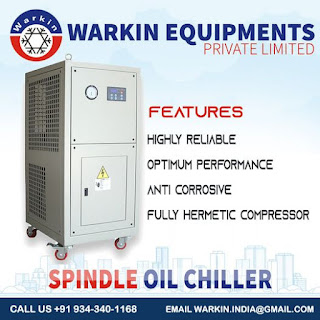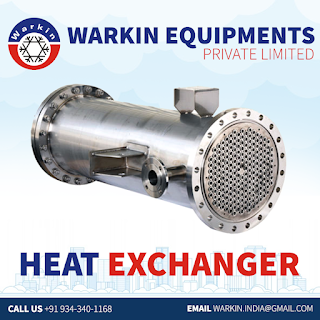A synopsis of Process water chiller
Process water chiller circulate chilled water or liquid through industrial equipment in several applications to cool items and machinery. Injection molding, tool&die-cutting, food&beverage,machine tools, semiconductors,etc employ them.
The process water chiller's role is to transfer heat from one area, often process equipment or a product, to another. We are one of the top process water chiller manufacturers in India.
Heat is typically transported
to and from the chiller using water or a water/glycol solution which may demand
the process water chiller to have a reservoir and pumping system. Regardless of your
business or process, ensuring enough cooling is important to productivity and
cost savings.
Advantages of Process water chiller:-
No
industrial process, machine, or motor is completely efficient, and the most
prevalent consequence of inefficiencies is heat. If the heat doesn't eliminate,
it will accumulate over time. As a result, production times are reduced,
equipment is shut down, and equipment may fail prematurely. There are several
advantages to using a chiller to produce cooling. A chiller maintains a
consistent temperature and pressure in your industrial activity. Also, a
chiller, as opposed to a wasteful single-pass-through system, recirculates the
cooling water. As a result, water recirculation reduces the cost of water use,
which can be costly and harmful to the environment.
Working principle of Process water chiller :-
A
process water chiller's evaporator, compressor, condenser, and expansion valve
are four components that work together to provide effective process cooling. A
pump system pumps cold water or a water/glycol solution from the chiller to the
process. This cold fluid eliminates heat from the operation, while the hot
fluid returns to the chiller. As a result, heat transfer occurs from the
process to the chiller via the process of water. Process chillers include a
chemical compound known as a refrigerant. The process of heating and cooling
the refrigerant, converting it from a gas to a liquid, and back is the
refrigeration cycle.
The
heat generated by the process water or water/glycol solution boils the
refrigerant in the evaporator, causing it to transition from a low-pressure
liquid to a low-pressure gas. The low-pressure gas is compressed to
high-pressure gas when it enters the compressor. The high-pressure gas enters
the condenser, where it gets cool down to a high-pressure liquid by ambient air
or condenser water. The high-pressure liquid flows to the expansion valve,
which controls the amount of liquid refrigerant that enters the evaporator and
restarts the refrigeration cycle.
We, Warkin Equipments Pvt Ltd is
a leading
process water chiller suppliers in India. We have been
designing & supplying high-quality process
water chiller. So, to learn more about how we can help you with your
process cooling needs, please contact us now.




Comments
Post a Comment